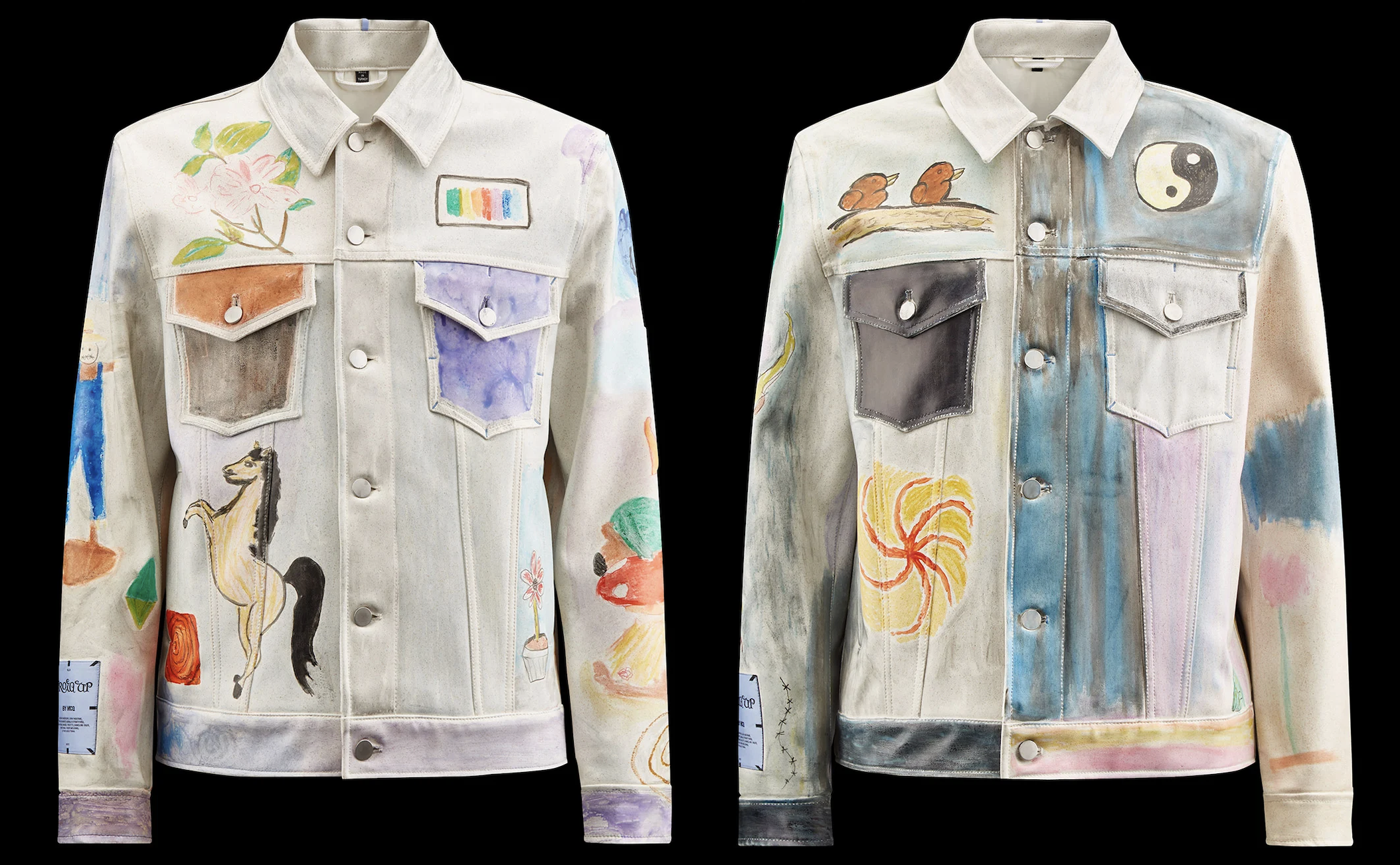Hermès, Alexander McQueen, Ralph Lauren, and Stella McCartney are just some of the leading luxury brands that are partnering with innovative leather alternative companies as part of a growing shift towards more sustainable options offered to their customers. But are shoppers ready to buy them and can leather alternatives be produced at scale?

In late September, MycoWorks, a material innovation company that produces a mycelium-based leather alternative called Reishi™, will open its first commercial-scale production facility in South Carolina.
The company is set to rapidly scale production, with its sights firmly set on the luxury market. In July 2021, MycoWorks tapped ex-Hermes chief executive Patrick Thomas to join its board, following the release of its first product collaboration with the heritage brand in March that year. Since then, the company has collaborated with a number of smaller luxury brands on accessories like wallets to hats.
MycoWorks isn’t the only leather alternatives company finding partners in the luxury space. In recent years, Natural Fiber Welding (NFW) has worked with the likes of Alexander McQueen, Ralph Lauren and Richemont on products made from MIRUM®, which fuses agri-waste and natural rubber to create a petrochemical-free material. This year, Stella McCartney released two MIRUM® handbags. An early adopter in the world of leather alternatives, the brand says it has sold more than a million Falabella bags since launching the leather-free style in 2009.
Leather Still Dominates In Luxury
While the alternatives market is growing, it still has a long way to catch up with the established leather sector. Textile Exchange estimates that 12.48 million tonnes (or 1.4 billion animals) were used for leather production in 2021. Last year, LVMH saw a record-breaking 25 percent revenue growth in its fashion and leather goods, while Kering saw a 14 percent increase in sales off the back of its leather goods and ready-to-wear.
Clearly, leather dominates the luxury sector. So why are industry leaders investing in alternatives?
“Oftentimes, people at the top like the challenge — they like to be the pioneers of this new thing,” says Thomasine Dolan Dow, director of materials innovation at Materials Innovation Initiative (MII). “I hope it’s because they see the desperate need for sustainable materials that use renewables, are environmentally preferred and are animal-free.”
Brands are starting to recognise a significant cultural shift towards lower-impact lifestyles, particularly among younger consumers. In 2021, Lyst reported a 178 percent increase in searches for ‘vegan leather’ and a 38 percent increase in mushroom-based materials. “The new generations are a bit more earth conscious and sustainability conscious, they’re a bit bored of the old leather handbags,” says Sonya Parenti, a sustainable apparel and leather goods expert who has worked for brands like Prada, Bally, Burberry and Paul Smith. “They’re curious to see what kind of alternatives there are just for the sake of innovation.”
Leather alternatives on also on the rise due to an increased awareness of the environmental impacts and animal welfare concerns surrounding the leather industry. Cattle farming is a significant contributor to deforestation — between 2001 and 2015, 45.1 million hectares of forests were converted to cattle pastures around the world. Leather production is also incredibly toxic, using hundreds of chemicals in its processing and production. It is estimated that 90 percent of the world’s leather is still tanned using chromium, a known carcinogen.

Credit: Courtesy.
Challenges and Opportunities in the Alternatives Space
In its race to overtake leather, the alternatives market still has a few fundamental issues to solve. Leather is durable, long-lasting and flexible, largely due to the aforementioned chemical interventions, but the same can’t be said for alternatives yet. “Because leather’s been around for so long, we know how it wears,” says Dolan Dow. “The next generation of leather [alternatives] are still pretty new, so we don’t really know how they wear. At best, we’ve seen some of them that are a couple of years old.”
Leather alternatives can largely be split into two categories — those that contain plastics like polyvinyl chloride (PVC) or polyurethane (PU) and those that don’t. While plastic-free leather alternatives are only just hitting the market, the former have been around for years. Sold as eco-friendly and ‘vegan’ alternatives because they often use waste feedstocks like grapes, pineapple leaves, and orange and apple peels, the PU and PVC inputs give these materials the flexibility needed for a wide variety of applications.
VEGEA® grape leather, for example, is commonly turned into footwear because its high PU content (up to 45 percent) makes it more malleable. Unfortunately, a high plastic content also means these products lack durability, releasing toxic chemicals as they biodegrade. The next generation of leather alternatives that don’t contain plastics, like MIRUM®, Reishi™ and the up-and-coming Treekind® by Biophilica, still have their work cut out to set themselves apart from the cheaper ‘vegan leathers’ already on the market, while also meeting quality and performance expectations.
For some luxury shoppers, the idea of passing down their favourite leather handbag is part of the allure — it is a long-term investment. “If you pass on a handbag that’s leather, there’s something more attached to it, you feel proud wearing it because your mother wore it,” says Parenti. “When you give something that’s synthetic, I think it has a different value attached to it. We could compare it to a Kindle vs. a real book, you don’t have much emotion attached to it.”
In order to tick the long-term investment box, alternatives require rigourous testing, development, and thoughtful storytelling. “Marketing is really important — to tell that story in a way that makes people want to get involved, covet it and brag about it,” says Dolan Dow. She believes that if anyone can make leather alternatives covetable, it’s luxury houses. “We know that consumers will pay more if they’re really drawn to something, but the designers really need to make that product beautiful,” she says. “And if it doesn’t elicit an emotional response from the consumer, it goes nowhere, right?”
Currently, the cost of next-gen, plastic-free leather alternatives is comparable to bovine leather, making it prohibitively expensive for fast- and contemporary-fashion consumers. Luxury brands, however, can lean into the exclusivity piece. Stella McCartney’s Falabella MIRUM® Tiny Tote bag is just 19 x 18 cm but costs €985 ($1’051). “Not everybody can afford it, so that also makes it interesting,” says Dolan Dow. “People like that because it sort of sets them apart.”
It’s not all smooth sailing for the leather alternatives once they do scale. Earlier this year, the closure of Bolt Threads’ Mylo material just two years after it was commercially scaled shows that the market is still precarious.
Further investment from luxury brands — which will in part be driven by consumer demand — is needed to scale and secure the production of next-gen materials.
“We’re on the journey and in five years, I think a lot of these next-gen products will be scaled,” says Dolan Dow. “It all takes time and money…and luxury brands have that money.”










